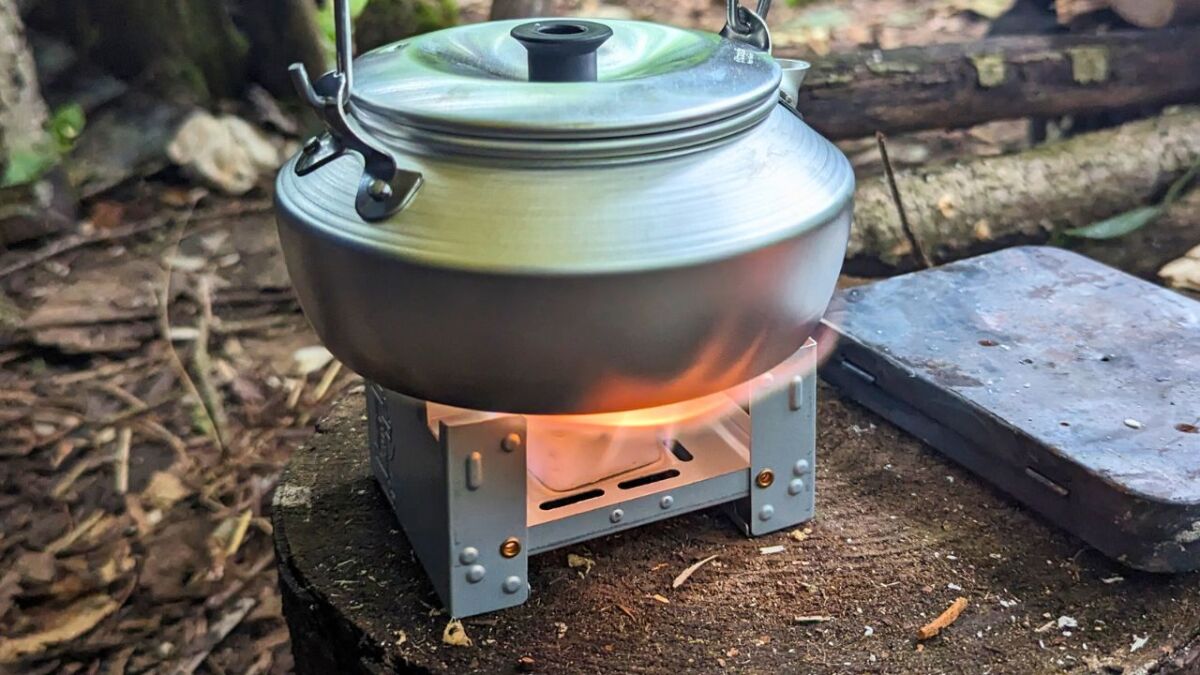
drinking water disinfection
Noun
Meaning
Drinking water disinfection is the process of treating water to remove or kill harmful microorganisms, making it safe for consumption. In the context of survival, bushcraft, wilderness, camping, and hiking, ensuring access to clean and safe drinking water is of utmost importance. When venturing into the outdoors, it is crucial to have the knowledge and means to disinfect water sources to prevent waterborne illnesses. This can be achieved through various methods such as boiling, using water filters, chemical treatments, or ultraviolet (UV) light. Understanding and practicing drinking water disinfection techniques is essential for anyone exploring the great outdoors.

Examples
„I love spending time in the wilderness, practicing bushcraft and survival skills. One essential skill is drinking water disinfection. It's crucial to ensure that the water we drink is safe and free from harmful bacteria or parasites.“
„When I go camping with my friends, we always bring a water filter and tablets for drinking water disinfection. It gives us peace of mind knowing that we can safely drink water from any source we find in the wild.“
„During a recent hiking trip, I met a fellow adventurer who had run out of clean water. I showed him how to use a portable UV sterilizer for drinking water disinfection. He was amazed at how quickly and effectively it made the water safe to drink.“
„In a survival situation, finding clean water can be a challenge. I remember a time when I had to rely on boiling water for drinking water disinfection. It took some time, but it was worth it to have safe drinking water in the end.“
„I often receive questions from beginners about the best methods for drinking water disinfection in the wilderness. I always recommend using a combination of filtration, chemical treatment, and UV sterilization to ensure the water is safe to drink.“
Origin
The term "drinking water disinfection" refers to the process of treating water to remove or kill harmful microorganisms, such as bacteria, viruses, and parasites, in order to make it safe for consumption. The practice of disinfecting drinking water has a long history and can be traced back to ancient civilizations.
One of the earliest methods of disinfection was boiling water, which was practiced by ancient civilizations such as the Egyptians and the Greeks. Boiling water kills most microorganisms, making it safe to drink. However, boiling water is not always practical, especially in survival situations where resources may be limited.
In the 19th century, the discovery of chlorine as a disinfectant revolutionized the field of drinking water disinfection. Chlorine is highly effective in killing a wide range of microorganisms and is still widely used today. The process of chlorination involves adding chlorine to water in controlled amounts to ensure that it is safe for consumption.
Over the years, other methods of drinking water disinfection have been developed, including the use of ultraviolet (UV) light, ozone, and various chemical disinfectants. These methods offer alternative options for disinfecting water, especially in situations where chlorine may not be readily available or suitable.
Today, drinking water disinfection is a critical step in ensuring the safety of our water supply. It is an essential practice in both everyday life and survival situations, where access to clean and safe drinking water is crucial for survival.
Synonyms
Water purification, Water sterilization, Water treatment, Water sanitization, Water decontamination, Water purification process, Water disinfection process, Water purification methods
Antonyms
Contaminated water, Untreated water, Dirty water, Polluted water, Unfiltered water, Impure water, Unsafe water, Unsterilized water
Relatives
Water purification, Water treatment, Water filtration, Water sterilization, Waterborne diseases, Waterborne pathogens, Waterborne illnesses, Water safety
Historical and cultural importance
Drinking water disinfection is a crucial process that has significant historical and cultural relevance. Throughout history, humans have faced numerous challenges in accessing safe and clean drinking water. Contaminated water sources have been responsible for the spread of diseases and epidemics, leading to countless deaths.
In ancient civilizations, various methods were employed to disinfect water. The Egyptians, for example, used sunlight and filtration techniques to purify their water. They would expose water-filled vessels to the sun's rays, which helped kill harmful microorganisms. Similarly, the Greeks and Romans used silver and copper vessels to store and transport water, as these metals were known to have disinfectant properties.
During the Industrial Revolution, advancements in science and technology led to the development of more effective disinfection methods. In the mid-19th century, the discovery of chlorine as a disinfectant revolutionized water treatment. Chlorination became widely adopted, significantly reducing the incidence of waterborne diseases.
Today, drinking water disinfection plays a vital role in ensuring public health and safety. Modern methods include the use of chlorine, ozone, ultraviolet (UV) light, and filtration systems. These techniques effectively eliminate harmful bacteria, viruses, and parasites, making water safe for consumption.
Understanding the historical and cultural significance of drinking water disinfection helps us appreciate the importance of this process in maintaining public health. It reminds us of the challenges our ancestors faced and the advancements that have been made to provide us with safe drinking water.
More information about the term drinking water disinfection
Drinking Water Disinfection: Ensuring Safe Hydration in the Wilderness
When venturing into the wilderness, one of the most crucial aspects of survival is ensuring a safe and reliable source of drinking water. In the absence of modern infrastructure, natural water sources such as rivers, lakes, and streams become our lifeline. However, these sources can also harbor harmful bacteria, viruses, and parasites that can lead to severe illness or even death. That's where drinking water disinfection comes into play.
The Importance of Drinking Water Disinfection
Drinking water disinfection is the process of eliminating or reducing harmful microorganisms from water to make it safe for consumption. In the wilderness, where water sources are often contaminated with various pathogens, disinfection becomes paramount. By effectively disinfecting water, we can minimize the risk of waterborne diseases and ensure our hydration needs are met without compromising our health.
Methods of Drinking Water Disinfection
There are several methods available for disinfecting drinking water in the wilderness. Each method has its advantages and limitations, so it's essential to choose the most suitable one based on the available resources and circumstances. Here are a few commonly used methods:
1. Boiling: Boiling water is one of the simplest and most effective methods of disinfection. By bringing water to a rolling boil for at least one minute (or three minutes at higher altitudes), we can kill most pathogens present. However, boiling may not be practical in certain situations due to limited fuel or time constraints.
2. Chemical Disinfection: Chemical disinfection involves using various substances to kill or inactivate microorganisms in water. Common chemical disinfectants include chlorine tablets, iodine, and water purification drops. These chemicals are readily available in compact and lightweight forms, making them ideal for wilderness use. However, some people may find the taste of chemically treated water unpleasant.
3. Filtration: Filtration is another effective method of removing harmful microorganisms from water. Water filters with a pore size of 0.2 microns or smaller can effectively remove bacteria, protozoa, and some viruses. However, filtration alone may not be sufficient to eliminate all pathogens, so it's often used in conjunction with other disinfection methods.
Best Practices for Drinking Water Disinfection
Regardless of the method chosen, there are a few best practices to follow when disinfecting drinking water in the wilderness:
- Always collect water from the cleanest source available, preferably upstream from any potential contamination. - If using chemical disinfection, carefully follow the instructions provided by the manufacturer to ensure proper dosage and contact time. - Allow the water to settle or use a pre-filter to remove any visible sediment before disinfection. - After disinfection, store the treated water in clean containers to prevent recontamination. - Regularly inspect and maintain your water disinfection equipment to ensure its effectiveness.
Conclusion
Drinking water disinfection is a vital skill for anyone venturing into the wilderness. By understanding the importance of disinfection and employing the appropriate methods, we can safeguard our health and enjoy safe hydration even in the most remote and challenging environments. Remember, in the wild, water is life, but only if it's properly disinfected.
Back to overview

